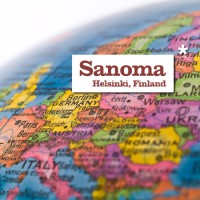For news media outlets, "Pinterest offers the chance to reach massive, sharing-oriented new audiences — but also requires a different, more visual kind of editorial thinking," according to the Nieman Journalism Lab. And now, both the Wall Street Journal and USA Today are trying out the site's reporting possibilities.
The Wall Street Journal has equipped nine reporters with iPhones and Instagram accounts to cover Fashion Week, with the journalists' tweets and images being compiled on the Journal's website and its Pinterest and Instagram accounts, reported the Nieman Lab. So far, the Wall Street Journal’s Fashion Week pinboard on Pinterest has about 1,700 followers.
USA Today used Pinterest to cover the Grammy Awards, reported Clases de Periodismo. The USA Today Grammys pinboard includes videos and photos and has about 400 followers.
Even Liz Heron, social media editor of The New York Times, said that lately she has been "thinking a lot" about how to use Pinterest, according to the BBC's College of Journalism blog. Heron's statement prompted the site journalism.co.uk to name Pinterest as the "tool of the week for journalists" for the week of Feb. 7.
- Wall Street Journal brings newspaper content to new Facebook app
- Storify seen as innovative tool to thwart "media blackout" of social movement coverage
- Newspapers for Facebook: Washington Post, Guardian and other media outlets launch social news app
- Boston Globe warns Occupy Boston protesters to stop using the newspaper's name and logo
- Newspapers reaching millions of readers with Facebook's social news app
Knight News Challenge contest will have three rounds per year seeking international media innovation
“With the new News Challenge, we’re moving at the speed of innovation,” said Michael Maness, Vice President of the Journalism and Media Innovation program at the Knight Foundation. “Instead of one year-long contest, we’ve broken this one up into three.”
This first round is centered on networks, and “seeks projects that use the best of existing software and platforms – those already integrated into people’s lives – to find new ways to convey news and information,” according to the Challenge website.
“There are a lot of vibrant networks and platforms, on- and off-line, that can be used to connect us with the news and information we need to make decisions about our lives,” said John Bracken, Director of the Journalism and Media Innovation program, in the Challenge announcement. “This challenge will not fund new networks. Rather, we’re asking you to describe ways you might use existing platforms to drive innovation in media and journalism.”
The kickoff to this year’s competition was announced on the Knight Foundation’s website with an online video, starring Maness (below). The Challenge is accepting applications from various groups, including for profit organizations, non-profits, institutions and start-up companies.
Project submissions will be accepted from Feb. 27 to March 17, with a winner announced in June. Top entries will receive funding from the Knight Foundation.
A second round, held later this spring, will be an open competition looking for new ideas broadly. The theme for the third round, later this year, will be announced later in the year.
The Knight News Challenge is part of the Knight Foundation’s $100 million Media Innovation Initiative, which seeks new ways to meet community information needs in the digital age. Since 2007, Knight has reviewed more than 12,000 applications and funded 76 projects for $27 million.
Knight News Challenge 2012 from Knight Foundation on Vimeo.
- Knight News Challenge to hold three innovative media contests in 2012
- Knight News Challenge awards $4.7 million for innovative media projects
- Dec. 1 is last chance to apply for 5th Knight News Challenge
- Google gives $5 million for innovative journalism projects, including $2 million to Knight Foundation
- 5th Knight News Challenge opens for entries Oct. 25, focuses on new Internet trends

The Wall Street Journal covers Fashion Week fashionably, finding uses for Pinterest and Instagram
The Journal has found the perfect story for two image-heavy social networks.

The incredible growth of Pinterest — the (invitation-only) social bulletin board dominated by young and female users — hasn’t gone unnoticed by news organizations. Like Tumblr before it, Pinterest offers the chance to reach massive, sharing-oriented new audiences — but also requires a different, more visual kind of editorial thinking. The Wall Street Journal is giving it an early try by looping in another booming young social app.
The Journal has deployed nine journalists to cover Fashion Week in New York, all armed with iPhones and Instagram accounts. They are encouraged to file constantly. (For fashion reporters, capturing photos is a form of note-taking.) Their tweets and images are automatically pulled into the Fashion Week section of the Journal’s website. The best ones are featured on Pinterest and re-posted on the Journal’s main Instagram account. The two social networks are perfect companions.
 Pinterest is a “really fast-growing social network that a lot of people are super-excited about,” said WSJ social-media editor Emily Steel, who used to cover digital advertising and marketing for the paper — “a lot of people both in the digital media/marketing/tech world, but also consumers who are really into fashion and arts and crafts and food.” In other words, people who may not be big Journal readers.
Pinterest is a “really fast-growing social network that a lot of people are super-excited about,” said WSJ social-media editor Emily Steel, who used to cover digital advertising and marketing for the paper — “a lot of people both in the digital media/marketing/tech world, but also consumers who are really into fashion and arts and crafts and food.” In other words, people who may not be big Journal readers.I was embarrassed to tell Steel I didn’t know the Journal even covered fashion.
“One of the fashion reporters, Elizabeth Holmes — she’s super active on Twitter and Instagram and social media — and what she said is that she’s always gotten a really big boost in followers during Fashion Week, and that people will tell her that they didn’t realize that the Journal covered fashion,” Steel told me. “That’s also kind of the idea with Pinterest…It’s a cool way to expose the Journal’s content to some people who might not know about it.”
The Journal’s Fashion Week pinboard has attracted about 900 followers so far. The Instagram account, a few weeks old, is approaching 8,000 followers.
Steel said she took notice of Pinterest users sharing WSJ content among themselves. A few weeks ago the Journal started building out its own Pinterest boards — a board for hedcuts, those famous dot drawings of newsmakers; a board for historic WSJ front pages; a board for WSJ Magazine covers.
Sometimes it feels like social media moves as fast as fashion. At this time a year ago, Instagram was almost brand new but had already signed up more than a million users. Pinterest was barely on the radar.
Today Instagram has 15 million users and signs up a new user every second, according to the company. This month Pinterest reached 11.7 million unique monthly U.S. visitors, according to data obtained by TechCrunch, “crossing the 10 million mark faster than any other standalone site in history.” Visitors spend an average of 98 minutes per month browsing that site.
Jeff Sonderman said “it’s time for journalists to pay attention to Pinterest,” with its loyal, distinct audience. Time, LIFE, Newsweek, PBS NewsHour, and Mashable are among the other news outlets dipping their toes in the water.
Photo of Aisha Tyler in Badgley Mischka by Elizabeth Holmes/The Wall Street Journal, via Instagram
What to read next

February 13, 2012
In the first part of our series on European models of news industry innovation, Ken Doctor looks at a Finnish publisher that’s had success getting print readers to pay for online access.

No comments:
Post a Comment